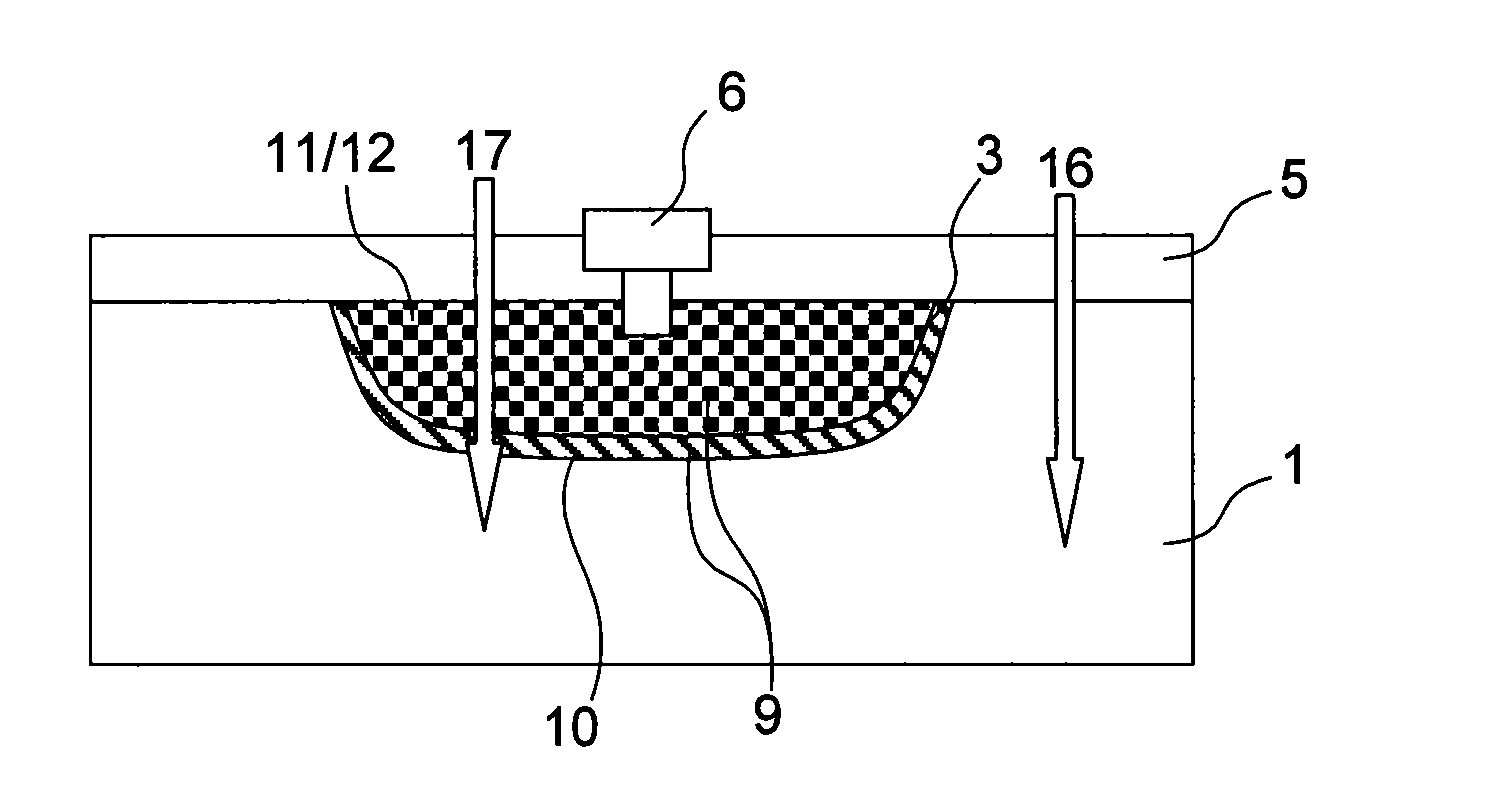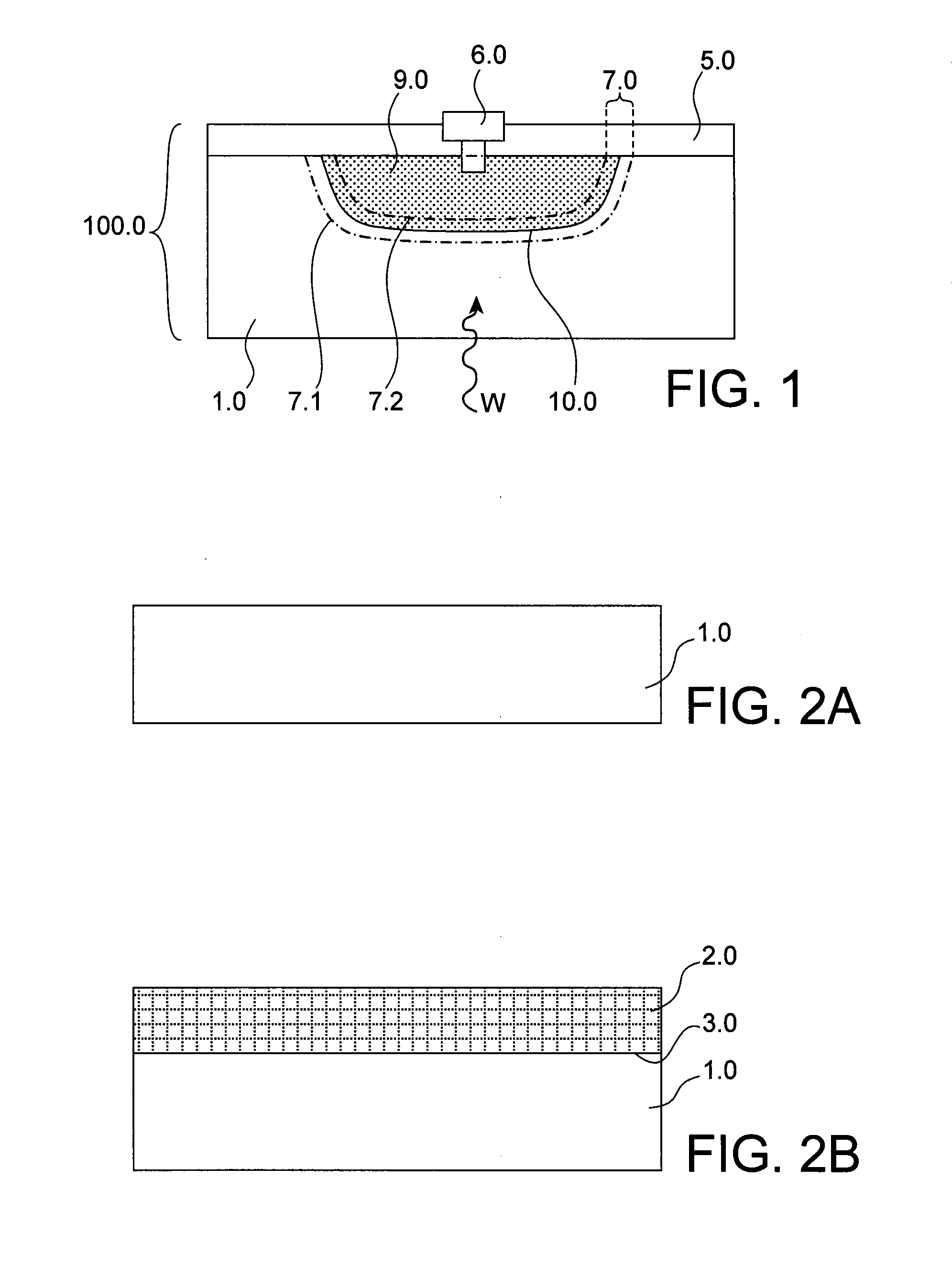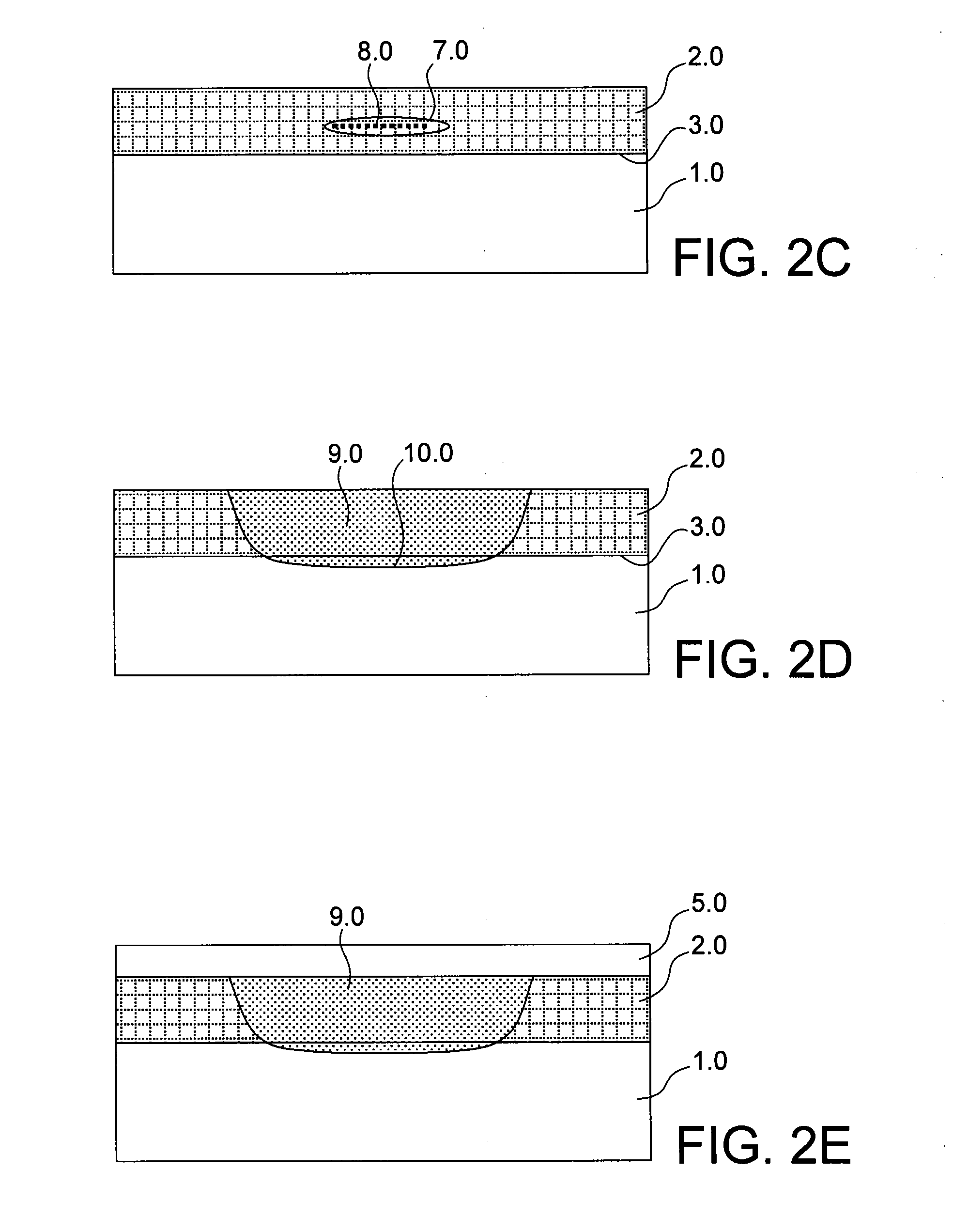P-n diode having a controlled heterostructure self-positioned on hgcdte, for infrared imagers
a heterostructure, infrared imager technology, applied in the field of diodes, can solve the problems of increasing the sensitivity of the diode to defects and a greater dark current, and the difficulty of growing a surface layer,
- Summary
- Abstract
- Description
- Claims
- Application Information
AI Technical Summary
Benefits of technology
Problems solved by technology
Method used
Image
Examples
Embodiment Construction
[0033]A diode having a p / n junction heterostructure according to the invention and the method according to the invention are intended to reduce the impact of these limitations. In particular, they are intended to produce a heterostructure of superior quality, at a lower cost, to facilitate the control of a relative position of the p / n junction in respect of the heterojunction and enhance the reproducibility and repeatability of this relative position from one substrate to another and one diode to another in the same substrate.
[0034]The invention thus firstly relates to a device having at least one heterostructure p / n diode, comprising a substrate based on Hg1-xCdxTe, mostly n-doped. The substrate comprises for each diode:[0035]a first part having a first cadmium concentration,[0036]a second part having a second cadmium concentration, greater than the first cadmium concentration, the second part, or concentrated part, forming a heterostructure with the first part,[0037]a p+ doped zon...
PUM
 Login to View More
Login to View More Abstract
Description
Claims
Application Information
 Login to View More
Login to View More - R&D
- Intellectual Property
- Life Sciences
- Materials
- Tech Scout
- Unparalleled Data Quality
- Higher Quality Content
- 60% Fewer Hallucinations
Browse by: Latest US Patents, China's latest patents, Technical Efficacy Thesaurus, Application Domain, Technology Topic, Popular Technical Reports.
© 2025 PatSnap. All rights reserved.Legal|Privacy policy|Modern Slavery Act Transparency Statement|Sitemap|About US| Contact US: help@patsnap.com



